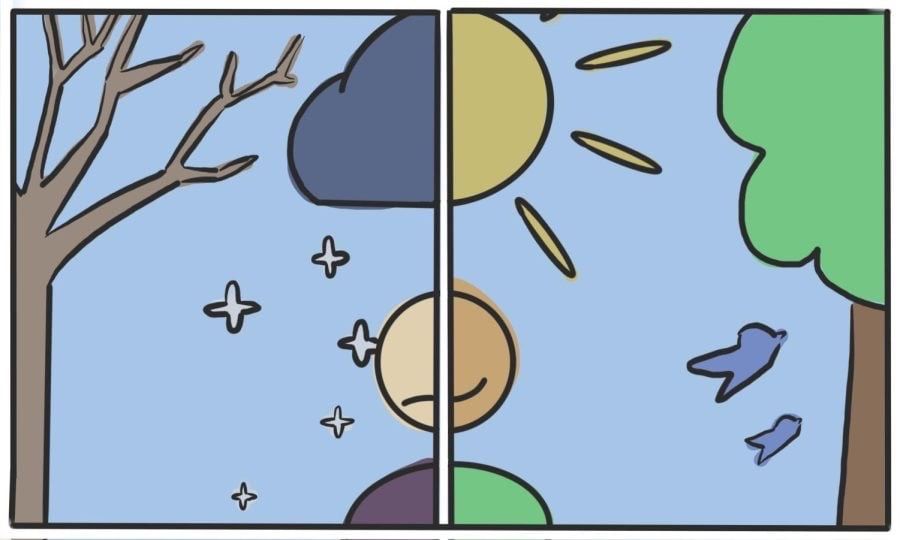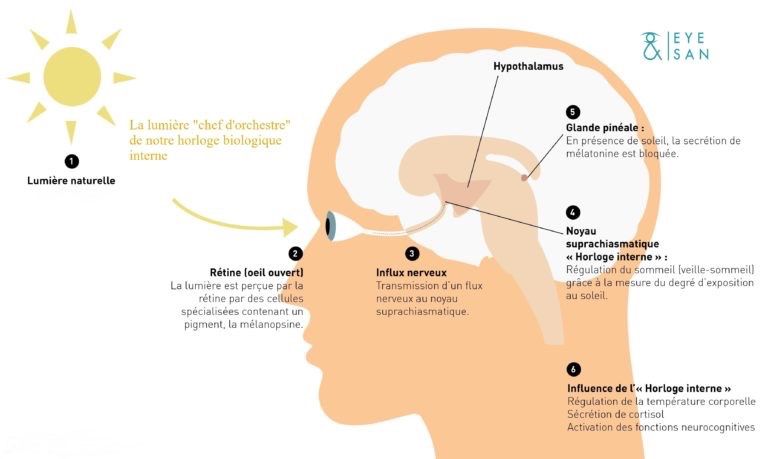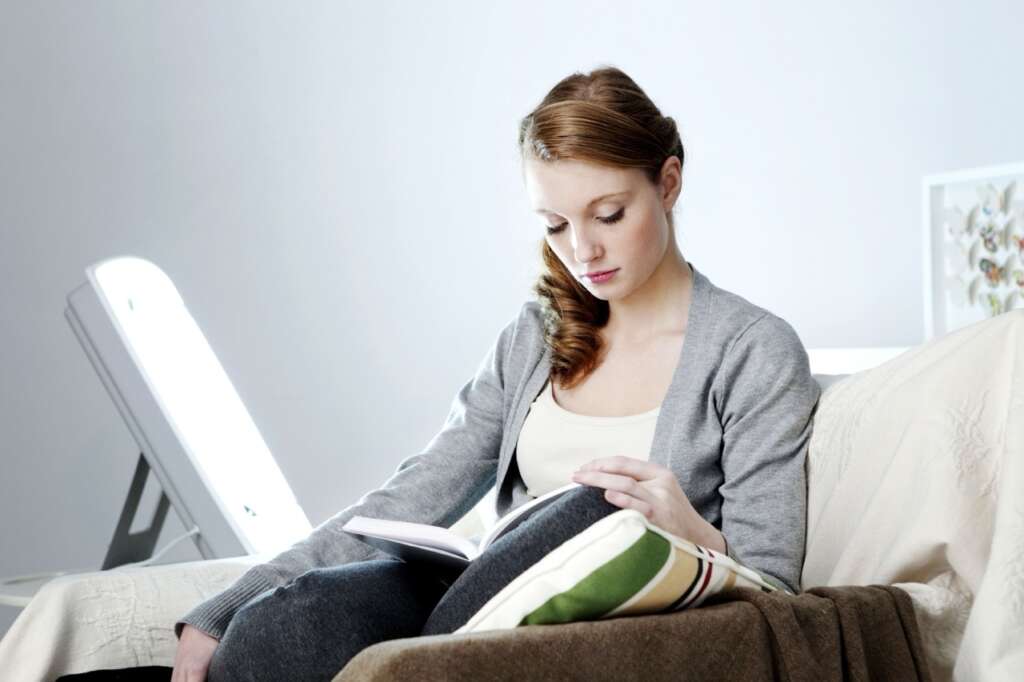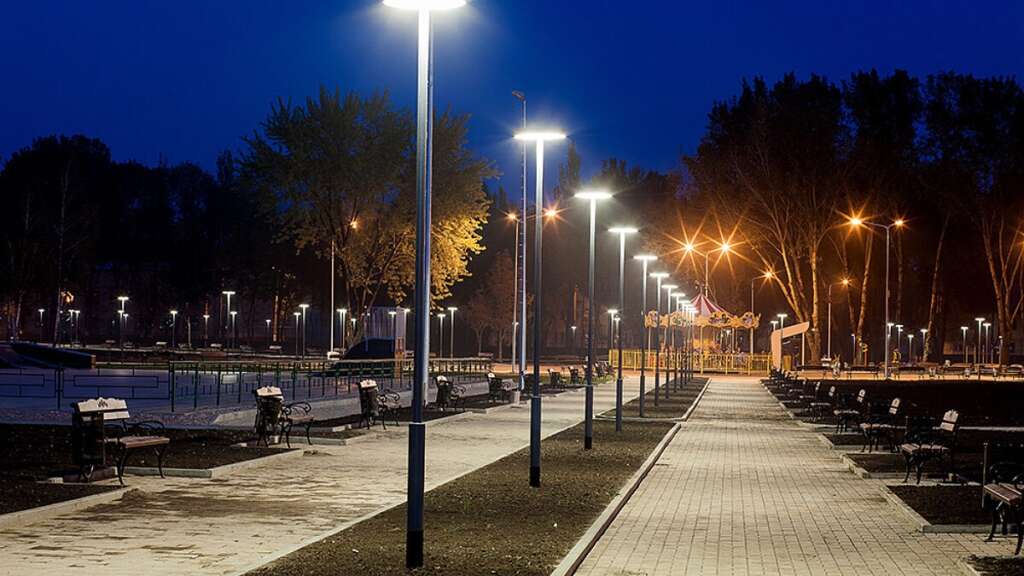
With the arrival of autumn and the switch to winter time, our days become shorter and the light decreases, strongly impacting our well-being. Light plays an essential role in maintaining our biological clock and our mood, and its absence can promote seasonal depression.
Here are some tips to better live this period and enjoy the benefits of light.
Why lack of light impacts our well-being
In autumn and winter, natural light becomes scarce, disrupting our circadian rhythm. Light is essential to regulate our biological clock and influence the production of hormones such as melatonin and serotonin.
Melatonin promotes sleep and is secreted mainly at night. In the evening, too much lighting slows down its secretion, thus delaying falling asleep.
As for serotonin, it influences our mood and mental alertness; a lack of light can lead to a drop in this hormone, thus increasing the risk of seasonal depression. This phenomenon affects approximately 10% of French people each year.

Symptoms of seasonal depression and their consequences
Seasonal depression, also called seasonal affective disorder (SAD), affects approximately 1 to 5% of the general population in France, according to INSERM. It mainly occurs in the fall and winter, when natural light decreases significantly.
Symptoms are varied: sleep disorders (insomnia or hypersomnia), persistent fatigue, decreased interest in daily activities, and a marked tendency to isolate. About 80% of those affected report an increased appetite, especially for foods rich in carbohydrates and sugars, which can lead to weight gain during the cold season.
These signs can have a profound impact on quality of life, causing a deterioration in social and professional relationships. Additionally, SAD can weaken the immune system: A 2023 study by William Coryell (MD, University of Iowa Carver College of Medicine) found that individuals with seasonal affective disorder have an increased risk of respiratory infections, due to decreased serotonin and melatonin, which as discussed above disrupt circadian rhythms and weaken natural immune defenses.

This phenomenon, although common in regions with low light during the fall and winter, remains poorly understood and often underdiagnosed. Better knowledge of the symptoms could help more people identify this condition and seek prevention measures, such as adjusting their indoor lighting to compensate for the reduction in natural light.
The importance of good light hygiene
To compensate for the lack of light in autumn, it is recommended to expose yourself to the sun for at least one hour a day, preferably in the morning. For those who work indoors or telework, it is essential to take advantage of natural light by setting up your workstation near a window.
In the case of artificial lighting, choose a cold light in the morning to stimulate attention, and a warmer light at the end of the day to prepare for sleep. (see our article explaining the different color temperatures)
Light therapy can also be considered for people most affected by seasonal depression, because it reproduces the benefits of natural light.

Light therapy is a non-drug approach that is increasingly being used to combat seasonal affective disorder (SAD) and other mood disorders related to reduced natural light in the fall and winter. It involves exposing yourself to artificial light of a specific intensity, usually around 10,000 lux, for 20 to 30 minutes each day in the morning. This light intensity, much higher than that of standard household lighting, mimics sunlight and helps regulate the body clock, or circadian rhythm.
Light therapy works by stimulating the production of serotonin, a mood-enhancing hormone, while reducing the secretion of melatonin, a sleep hormone that is often produced in excess during the dark months. According to published studies, this approach is effective for approximately 60 to 80% of patients with SAD, resulting in a significant reduction in symptoms. Additionally, light therapy is easy to implement at home with commercially available light therapy lamps. It is an accessible solution to improve mood, sleep quality, and overall vitality during the winter months, while having few side effects when used properly.
Studies show that daily exposure to 10,000 lux light for 30 minutes in the morning can reduce SAD symptoms in nearly 60 to 70% of cases, a non-drug alternative that highlights the importance of suitable lighting in this season. (Source: La Revue du pratique – October 2022).
The effects of public lighting on safety in winter
With the decrease in light at the end of the day, travel becomes less safe, especially at office and school hours. The importance of suitable public lighting can be highlighted to prevent the risk of accidents in urban areas.

Indeed, many cities adjust the times when their street lights are switched on and off depending on the season, in order to guarantee good visibility for pedestrians and motorists.
However, it remains essential that this lighting is well distributed and glare-free to avoid reducing visual acuity.
Quality, well-oriented public lighting can thus improve user safety and contribute to a better understanding of the surrounding space, despite the unfavourable lighting conditions of winter. It can also help reduce the effects of SAD (Seasonal Affective Disorder).
.
Adjust interior lighting for optimal visual comfort
During the fall and winter, we spend more time indoors, often exposed to artificial light sources. The AFE (French Lighting Association) recommends choosing suitable indoor lighting to support our visual comfort and preserve our well-being. Lighting that is too intense or poorly positioned can cause glare, tiring shadows and headaches. It is advisable to opt for lighting fixtures that can be adjusted in intensity and to choose a cool color temperature during the day to improve attention, and warmer tones in the evening to promote relaxation.
This type of regulation allows us to respect our biological clock and adapt to the different times of the day, thus minimizing the effects of the drop in outdoor light on our morale and visual health.
Fall and winter bring challenges to our well-being, particularly due to the decrease in natural light. Various studies highlight the importance of good lighting hygiene to better get through this period. Lighting plays a crucial role in our daily lives: by adjusting our lighting habits, we can preserve our health and energy throughout the winter.

To finish this article, here are three other tips related to areas other than lighting to make the next few months perfect for you:
Eat a balanced diet to support your immune system

In winter, diet plays a key role in maintaining energy and immunity. To avoid fatigue, it is important to eat seasonal fruits and vegetables such as carrots, kale, squash, pears, and clementines. These foods are rich in vitamins and minerals, which help the body better resist infections.
Also consider incorporating foods with antibacterial properties, such as honey, which can support the immune system. Finally, even if comfort foods are tempting, keep in mind that eating too much fat can weigh down the body and weaken vitality.
Practice regular physical activity

With the cold and lack of light, it can be difficult to stay active, but sport remains essential for mental and physical well-being. In winter, focus on daily walking or gentle physical activities, at least 30 minutes a day, to maintain a good energy level and release endorphins, the feel-good hormones.
The simple fact of being outdoors, even on foot, helps to maintain a positive mood. Just make sure to cover yourself well to avoid the cold and take the opportunity to get some fresh air and stimulate your body despite the drop in temperatures.
Strengthen barrier gestures to protect yourself from seasonal viruses

In winter, viruses such as the flu or gastroenteritis are more common, especially since the pandemic when herd immunity may have decreased. Adopt good habits to reduce the risks: wash your hands regularly, cough into your elbow, and avoid direct physical contact whenever possible.
In closed and busy places, such as public transport, a mask remains an option to protect yourself from infections. At home, heat rooms to a maximum of 19°C and ventilate at least twice a day to eliminate humidity and pathogens from the indoor air.
Sources : AFE – october 2022, La Revue du praticien – october 2022, MSD october 2023



